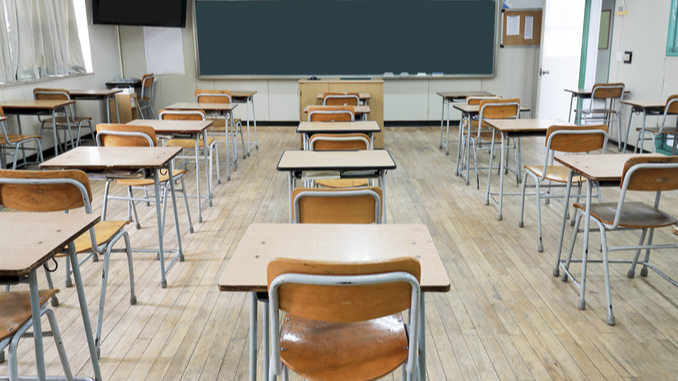
The Migrant Surge Is Coming To The Classroom
By Betsy McCaughey |
Democratic politicians and the liberal media made the first day of school all about welcoming migrant children. That’s sheer propaganda. Parents deserve the truth. The migrant surge is a disaster for their kids.
The surge will worsen our education system’s twin failures: plunging math and reading scores, and the failure to ensure newly arriving kids learn English so they can succeed, too.
Kimberly Carchipulla, who came from Ecuador and has been living at the Roosevelt Hotel in Manhattan with her son, brought him to school on Thursday and said through a translator, “What I want for him is a future.”
That’s what all parents want. But when migrant children are added to the class, the rest of the kids get less of their teacher’s attention. A teacher will have to focus on the needy newcomers who speak no English and may not have been to school before. For the rest, it could be a year of lost opportunities.
Public school students’ reading and math scores have been falling for decades, hitting a new low this year, according to National Assessment of Educational Progress tests. One reason is the soaring number of non-English-speaking students, up from only 9% of public school students in 1980 to nearly 25% now.
Until the 1960s, children arriving in this country were put in public school without interpreters and bilingual teachers. Children were taught in one language — English. No confusion. The current approach is a disaster for migrants and for the rest of the kids in class with them. The data don’t lie.
Now typically, a bilingual teacher and teaching assistants try to teach — math, science, art, any subject — in two or more languages, speaking English at times but also answering questions in Spanish and other languages. It’s chaos. Everyone learns less.
Jean Skorapa, superintendent for a rural school district in Maine, says the 67 migrant children enrolling in her district “are a tremendous, tremendous benefit”: “They make our community diverse and more well-rounded.” All true. But that’s happy talk.
What about the impact on learning? Geralde Gabeau, executive director of the Immigrant Family Services Institute in Massachusetts, explains that migrant children will be placed “in a first grade class with other students who already know their ABCs, who already know how to read, so those children are going to suffer.”
New York City has disastrously low reading scores. The influx of non-English-speaking students makes the challenge greater.
European countries are also grappling with waves of migrants. IZA, a European think tank, reports that “a high share of immigrant children in schools leads to lower test scores of native children.” Organization for Economic Cooperation and Development researchers report similar findings.
It’s not about race or ethnicity. It’s about too many languages spoken in the classroom.
Politicians would rather pander than address it. Connecticut Gov. Ned Lamont says, “From the bottom of my heart, I want to make sure this is the most welcoming state in the country.” Yet state education statistics show that the more “high-needs” kids in the class, including non-English-speaking students, the lower the reading and math scores for the others.
The current system is lose-lose, hurting migrant kids as well. They’re given too many opportunities not to learn English. Lamont, for example, is expanding translation services for parents and interpreters for students. That’s misguided. Families need to be prodded to learn English, not linger in a language ghetto.
Some school districts in New York state are experimenting with temporarily schooling newcomers separately, offering them months of intensive language preparation to succeed as English-speaking students. Good idea.
But the United Nations insists children have a “right” to be educated in their native language. Nonsense. It dooms them to low-paying jobs.
The vast majority of non-English-speaking students — 97% according to one report by the Federation for American Immigration Reform — lack English proficiency when they graduate from U.S. high schools. That’s the definition of failure.
Last week, mothers gathered outside Park Avenue elementary school in Port Chester, New York, to pick up their kids. Few spoke English. Some mothers had attended the same school decades earlier. Yet they can’t speak English. Tragic.
Tell the pols to stop romanticizing this lose-lose disaster and start fixing it.
This is America.

Originally published by the Daily Caller News Foundation.
Betsy McCaughey is a contributor to The Daily Caller News Foundation and a former lieutenant governor of New York and chairman of the Committee to Reduce Infection Deaths. Follow her on Twitter @Betsy_McCaughey. To find out more about Betsy McCaughey and read features by other Creators Syndicate writers and cartoonists, visit the Creators Syndicate website at www.creators.com.

